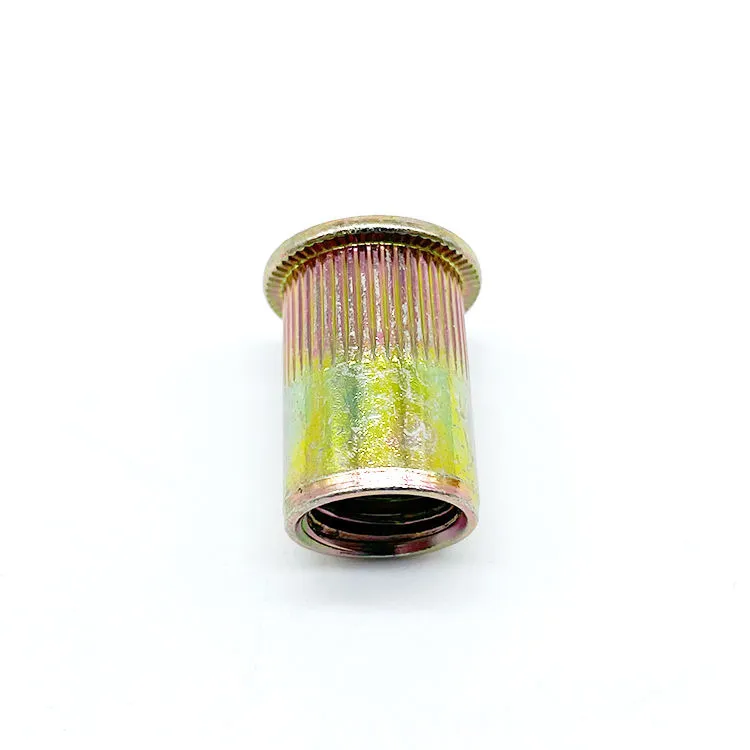

Understanding the Functionality and Types of Threaded Nuts in Mechanical Applications
نومبر . 09, 2024 22:11 Back to list
Understanding the Functionality and Types of Threaded Nuts in Mechanical Applications
Understanding Threaded Nuts An Essential Component in Mechanical Engineering
In the fascinating world of mechanical engineering, threaded fasteners play a pivotal role in ensuring the integrity and functionality of various structures and machines. Among these, the threaded nut serves as an essential component, enabling secure connections between different parts of machinery and equipment. This article delves into the design, types, applications, and considerations associated with threaded nuts.
What is a Threaded Nut?
A threaded nut is a hexagonal, cylindrical piece of metal that features internal threads, allowing it to be fastened onto a corresponding bolt or screw. These nuts are designed to hold components together, withstand forces, and distribute loads evenly. The internal threads of the nut correspond to the external threads of the bolt, facilitating a secure connection when tightened.
Types of Threaded Nuts
There are several types of threaded nuts, each tailored for specific applications and requirements. Some of the most common types include
1. Hex Nuts The most prevalent type, hex nuts have six sides and are typically used in conjunction with a hex bolt. They provide excellent gripping power and are available in various materials, including steel, stainless steel, and brass.
2. Lock Nuts These nuts are designed to resist loosening under vibration or torque. They come in several designs, including nylon-insert lock nuts and serrated flange nuts. Lock nuts are crucial in applications where vibrations are commonplace, such as in automotive and aerospace sectors.
3. Wing Nuts Featuring two large wings for easy manual operation, wing nuts allow for quick fastening without the need for tools. They are often used in applications where frequent adjustments are necessary, such as in woodworking or temporary structures.
4. Jam Nuts These are thin nuts that are used in conjunction with standard nuts to prevent loosening. A jam nut is tightened against a standard nut, providing additional resistance against vibrations.
5. Cap Nuts Also known as acorn nuts, cap nuts have a domed top that covers the exposed end of a bolt. They are often used for aesthetic purposes or to protect the threaded end from damage.
Applications of Threaded Nuts
Threaded nuts are ubiquitous in various industries, from construction and automotive to aerospace and electronics. Their applications include
threaded nut

- Construction In building structures, threaded nuts are essential for securing bolts that hold beams, frames, and other critical components together
.- Automotive Vehicles rely on threaded nuts to fasten various parts, including engines, suspensions, and chassis. The reliability of these nuts ensures the safety and performance of the vehicle.
- Aerospace In aviation, the stakes are higher, and the reliability of every component is crucial. Threaded nuts in aircraft are designed to withstand extreme conditions, including high vibrations and changes in temperature.
- Machinery Manufacturing equipment and machinery utilize threaded nuts to maintain the integrity of assemblies, ensuring they operate smoothly and efficiently.
Considerations When Using Threaded Nuts
When selecting and using threaded nuts, several factors must be considered
1. Material The environment in which the nut will be used plays a significant role in material selection. Stainless steel is ideal for corrosive environments, while carbon steel is adequate for dry, controlled settings.
2. Strength Understanding the load and stress that a threaded nut will encounter is vital. Different grades and sizes of nuts provide varying strength levels, influencing performance and safety.
3. Compatibility Ensuring that the threaded nut is compatible with its corresponding bolt is critical. The pitch, diameter, and thread type must all align for optimal performance.
4. Installation Proper installation techniques should be employed to avoid stripping threads or over-tightening, which can lead to failure.
Conclusion
Threaded nuts are fundamental components in the assembly of machines and structures, providing reliability and stability across various industries. Understanding the different types, applications, and considerations of threaded nuts can help engineers make informed decisions, ensuring safety and efficiency in their designs. As technology evolves, the design and materials used in threaded nuts continue to improve, paving the way for advancements in mechanical engineering and construction.
Latest news
-
Premium Fasteners Manufacturer | AI-Driven Solutions
NewsAug.01,2025
-
Hot Dip Galvanized Bolts - Hebei Longze | High Strength, Corrosion Resistance
NewsAug.01,2025
-
High-Strength Hot Dip Galvanized Bolts - LongZe | Corrosion Resistance, Custom Sizes
NewsAug.01,2025
-
Best Self Tapping Screws for Drywall - Fast & Secure Installation
NewsJul.31,2025
-
High-Strength Hot Dip Galvanized Bolts-Hebei Longze|Corrosion Resistance&Customization
NewsJul.31,2025
-
Hot Dip Galvanized Bolts-Hebei Longze Metal Products|Corrosion Resistance&High Strength
NewsJul.31,2025

